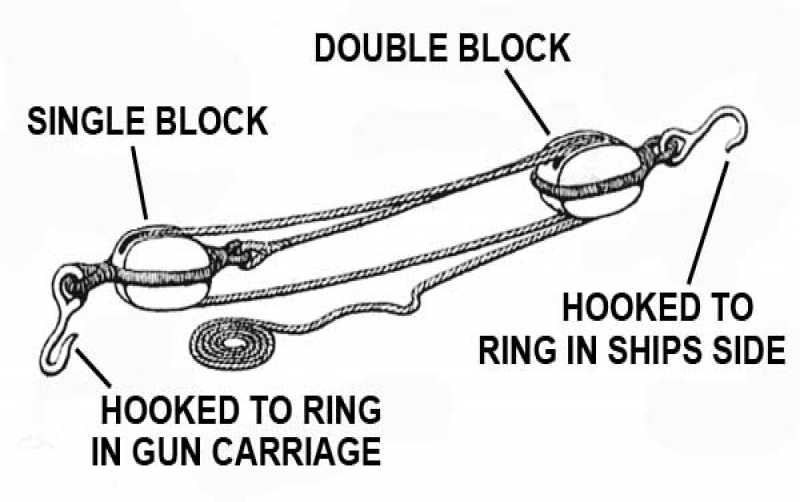DD,
The last photo with the ¼-inch sisal looks like the right size for the breeching rope on your gun.
This is from a PDF about the HMS Victory. I think the 6½-inch cicumfrence breeching rope is for 32-pounders.
Side and train tackles: There were three identical tackles for each gun, two side tackles and a train tackle. Irrespective of use each comprised one double and one single block through which were roved the falls (ropes).

Their functions were as follows:
Side tackles: Fitted each side of the gun, one double block was hooked to the ring bolt fixed to the ship's side alongside the gunport and the single block rigged to the eye bolt on the side of the carriage cheek, just above the rear truck. These tackles were used to run the gun out from its reload/recoil position and to train it left or right when the captain of the gun was aiming at the target. Also used to stop the gun running back due to the heel of the ship.
Train tackle comprised one single block hooked to the eyebolt in the centre of the rear axle-tree and the double block hooked to a ring bolt in the deck as far inboard near the centreline of the ship. This tackle was used to stop the gun running out on its own due to the heel of the ship. It was also used to run the gun in if the slope of the deck made it necessary, or if no recoil when firing blanks/saluting charges. This made it possible for the muzzle to be inboard and clear of the gun port so that sponging and reloading could take place.
Quarter bolt: In addition to the ring bolts fitted either side of the gun ports to which the side tackles were normally hooked, there was another ring bolt on the ship's side between each gun position and shared by two guns, which enabled the extremes of training to right and left to be achieved.
Breeching rope: A stout rope of between 6.1/2 ins (16.5 cm) and 5 ins. (12.7 cm) circumference, depending on size of gun, used to restrain the recoil of the gun. Made to a length of 3 x length of the gun, after firing it permitted the muzzle to be a little inboard from the gun port to enable sponging and reloading to be carried out. The rope passed through the breeching loop (neck ring) on the cascable, then down through the ring bolts fitted each side of the carriage cheeks and then made securely fast to ring bolts fixed to the ship's side either side of the gun port. Ringbolts on the carriage cheeks were in use until about 1854. They were discontinued around 1854/1860. As these bolts appear in many earlier drawings and for many years later than 1805, Victory guns would originally have had ringbolts fitted on all the carriages.